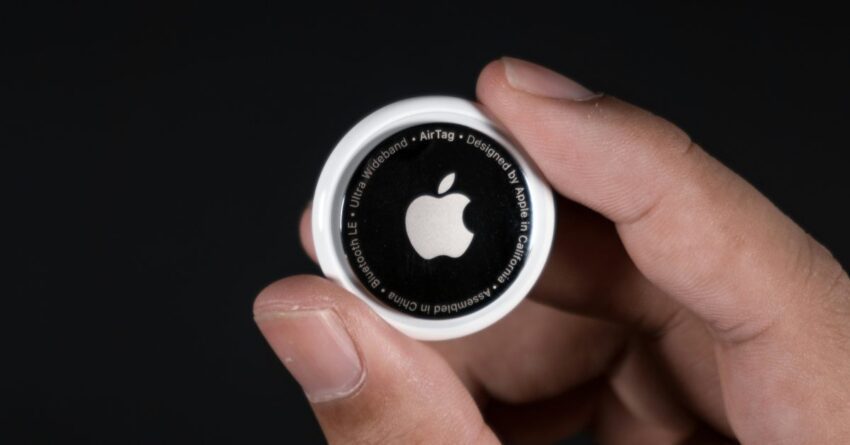
airtag 2 vs airtag here are the As anticipation builds for the release of AirTag 2, comparisons with the original AirTag are becoming increasingly relevant.
airtag 2 vs airtag here are the
Background on AirTag
Apple’s AirTag was introduced in April 2021 as a tracking device designed to help users locate personal items such as keys, bags, and wallets. Utilizing Apple’s extensive Find My network, the AirTag leverages Bluetooth technology and ultra-wideband (UWB) capabilities to provide precise location tracking. The device quickly gained popularity due to its seamless integration with Apple’s ecosystem and user-friendly interface.
Since its launch, the AirTag has remained largely unchanged, leading to speculation about potential updates and enhancements. As of 2025, four years have passed since the original release, and users are eager for a hardware revision that could bring new features and improvements.
Expected Features of AirTag 2
Rumors surrounding the AirTag 2 suggest several enhancements that could differentiate it from its predecessor. While Apple has not officially confirmed any details, industry insiders and analysts have speculated on various aspects of the new device.
Design Changes
One of the most discussed potential changes is the design of the AirTag 2. The original AirTag features a sleek, circular design with a stainless steel back and a removable battery. Speculations indicate that Apple may introduce a more durable casing, possibly with improved water and dust resistance ratings. This would enhance the device’s longevity and usability in various environments.
Improved Battery Life
Battery life is another critical area where improvements are anticipated. The current AirTag uses a standard CR2032 battery, which typically lasts about a year. Reports suggest that AirTag 2 may incorporate more energy-efficient technology, potentially extending battery life significantly. This enhancement would alleviate the need for frequent battery replacements, making the device more convenient for users.
Enhanced Tracking Capabilities
The original AirTag utilizes Bluetooth and UWB for tracking, but AirTag 2 may introduce advanced tracking features. There are discussions about the possibility of integrating additional sensors or technologies that could improve location accuracy, especially in crowded or complex environments. Enhanced tracking capabilities would be particularly beneficial for users who frequently misplace items in busy settings.
Integration with Other Apple Devices
As Apple continues to expand its ecosystem, the integration of AirTag 2 with other devices could be a significant focus. Potential enhancements might include deeper integration with the Apple Watch, allowing users to locate items directly from their wrist. Furthermore, improved compatibility with smart home devices could enable users to track items more efficiently within their living spaces.
Implications of AirTag 2
The introduction of AirTag 2 could have several implications for both consumers and the broader tech landscape. As users increasingly rely on tracking devices, the competition among manufacturers is likely to intensify. Apple’s advancements in AirTag 2 may set new standards for the industry, prompting other companies to innovate and enhance their offerings.
Consumer Expectations
With the anticipated improvements, consumer expectations for AirTag 2 are high. Users are looking for a device that not only retains the core functionalities of the original AirTag but also introduces meaningful enhancements. The success of AirTag 2 will largely depend on how well Apple addresses these expectations and whether the new features provide tangible benefits.
Market Competition
The market for tracking devices has become increasingly competitive, with several companies offering alternatives to Apple’s AirTag. Brands like Tile and Samsung have developed their own tracking solutions, each with unique features. The introduction of AirTag 2 could further solidify Apple’s position in this market, but it may also push competitors to innovate and enhance their products to retain market share.
Stakeholder Reactions
As news of AirTag 2 circulates, reactions from various stakeholders have emerged. Consumers, tech analysts, and industry insiders are all weighing in on the potential impact of the new device.
Consumer Feedback
Many consumers have expressed excitement about the prospect of AirTag 2, particularly regarding the rumored enhancements. Users who have relied on the original AirTag appreciate its functionality but have voiced concerns about its limitations, such as battery life and tracking accuracy in crowded spaces. Feedback from the user community suggests that improvements in these areas would be well-received.
Analyst Insights
Tech analysts have also weighed in on the anticipated release of AirTag 2. Some analysts believe that the new device could significantly boost Apple’s accessory sales, especially if it incorporates features that resonate with consumers. Others caution that while enhancements are expected, Apple must also consider pricing strategies to ensure that AirTag 2 remains competitive in a crowded market.
Industry Trends
The tracking device market is evolving, with increasing consumer demand for innovative features. Stakeholders are closely monitoring trends such as the integration of artificial intelligence and machine learning into tracking technologies. If AirTag 2 incorporates such advancements, it could position Apple as a leader in the next generation of tracking devices.
Conclusion
As we await the official announcement of AirTag 2, the potential differences between it and the original AirTag are becoming clearer. With expected improvements in design, battery life, tracking capabilities, and integration with other Apple devices, AirTag 2 could redefine the user experience for tracking devices. The implications of these enhancements extend beyond consumer satisfaction; they could also influence market dynamics and competitive strategies among tech companies.
Ultimately, the success of AirTag 2 will depend on how well Apple addresses the needs and expectations of its users while navigating the competitive landscape. As the release date approaches, both consumers and industry stakeholders will be watching closely to see how Apple’s latest offering shapes the future of personal item tracking.
Source: Original report
Was this helpful?
Last Modified: November 12, 2025 at 4:41 am
2 views















